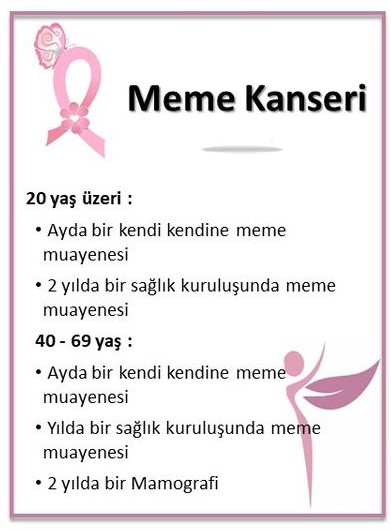Age and Breast Cancer Treatment
Breast cancer is the most common cancer among women in the world, and 32% of all cancers in women. forms this. Today, one out of every 8 women is at risk of developing breast cancer in her lifetime. The risk of breast cancer increases with age and the greatest increase is seen after the age of 40. Breast cancer is a disease that shows different clinical courses. For this reason, the ability to foresee different situations that may be encountered is the basic principle in diagnosis and treatment. For this purpose, the factors that may determine which treatment plan will be applied to which patient, the probability of recurrence and the entire course of the disease should be determined in advance.
Surgical treatment remains the treatment of choice in this disease. With the regular implementation of screening programs and the awareness of the patients, patients with early stage breast cancer are more often detected.
It is thought that breast cancer should not be evaluated as a single disease, but as a combination of different pathological processes, with different prognosis and prognosis; is becoming increasingly common. Long-term survival is mainly determined not only by early diagnosis but also by the behavior of the whole organism and its potential to spread throughout the body.
Since it is not possible to be protected from etiological factors such as gender, age, genetic condition, early diagnosis and treatment of the disease gains importance, therefore different treatment models have been developed for breast cancer. However, each form of treatment has been effective for some individuals with breast cancer. Therefore, it is very important to reveal “prognostic markers” that can predict the natural course of the disease, allow to determine the most suitable treatment plan, and evaluate the future of the disease. Factors affecting long-term survival for breast cancer have been shown in several studies. Among them, factors such as underarm lymph node involvement, whole size, and age still remain up to date. However, the presence and number of axillary lymph node involvement is still considered the most important factor in determining survival in patients with breast cancer. Young; underarm in patients at the age of lymph node of involvement and cell division ability is more, therefore young; It was stated that the recurrence of the disease after surgery at the age of 16 was related to these factors. age control of disease&; It has been emphasized that it has a negative effect on For this reason, patients with breast cancer were grouped before the age of 45, between the ages of 45-69 and after the age of 70. Long-term disease-free survival It has been emphasized that it is more common in patients after the age of 70, therefore the prognosis of breast cancer in advanced age is better. On the other hand, it should not be forgotten that whole size is one of the most important factors affecting survival. Today, age and tumor size are 2 important parameters that must be taken into account in determining the surgical treatment option.
The result is; aspect; For all breast cancer patients who apply to surgery clinics, preoperative and postoperative evaluations should be made carefully, prognostic factors should be determined by carefully performing staging studies, and surgical treatment should be chosen according to this information. It should be managed and directed to post-surgical treatments.

